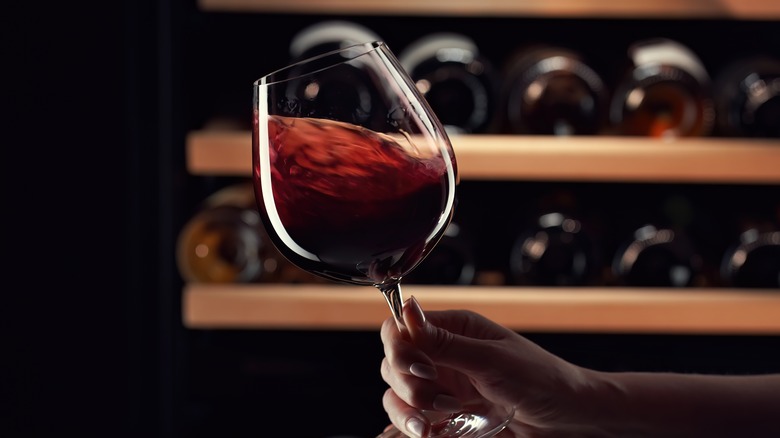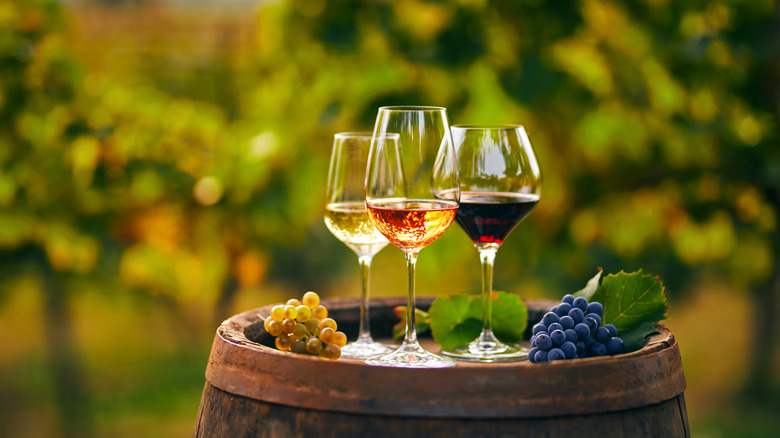What Causes Wine Tartness And Should You Be Concerned
It seems a little tartness never bothered anyone, since people have been drinking wine for over thousands of years. 8,000 to be exact, according to the oldest evidence of winemaking found in a village 20 miles south of Tbilisi, Georgia, reported by National Geographic. In fact, wine's tartness comes from its acidity, which is one of four fundamental traits in the drink alongside sweetness, alcohol, and the presence of tannins.
Acidity often plays a key role in how fresh a wine is perceived to be, and it's also an important part of wine quality. When you truly have a pleasurable wine-drinking experience, be it a Gamay from Beaujolais, a Nebbiolo from Piedmont, or a Riesling from the Finger Lakes of New York, it's typically because of the beverage is balancing its levels of sweetness, acidity, and so on. Acidity also helps preserve wines longer. Some higher acidity wines like Sauternes and Sangiovese can age for 20 or more years, and often taste more harmonious as they get more mature.
There are a wide range of factors that affect the acidity levels in wine, including the grapes' climate and terroir, which cause its characteristic tartness. For example, a wine that uses grapes that have ripened in a warmer climate, and picked at the right moment, will have a higher level of sweetness, which balances the wine's natural tartness. Meanwhile, cooler climates and shorter growing seasons will keep the wine's acidity levels intact, producing more herbaceous and tart-leaning vintages.
Is wine tartness ever an issue?
As Wine Enthusiast explains, wines that have a high acid level, and thus a low pH, are more "stable." Stability in wine means less possibility of contamination from bacteria and the like. Oftentimes, if a wine has a low acid and high pH level, winemakers will add sulfur dioxide and other sulfites to help it achieve that same level of stability.
So a wine that carries more tartness in its flavor profile is actually less likely to cause any issues in the drinker, as it has the protective buffer of acidity to help it keep its microbiology at optimal drinking levels. Just make sure the tartness is also playing off the other fundamental traits of wine to keep the wine in balance and delicious to drink.
Understanding the different elements of wine will make for a greater tasting experience. It's not just about acid — understanding tannins, which have their own health benefits, can upgrade everything from how you select your next bottle to how you talk about wine. By associating a grape's terroir, processes of production, and natural characteristics with its proclivity for acidity, you can pick a better bottle of wine for your specific palate without having to worry about whether it will be out of balance.

